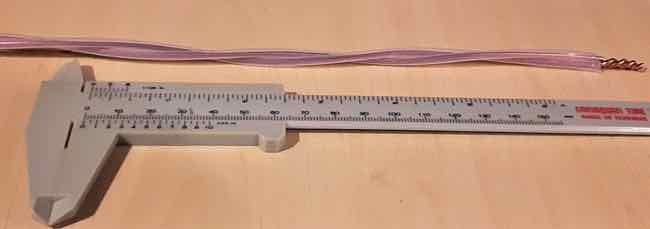@jay73 - unfortunately I recently sold those speakers with he Jumpers on them and I did not take any pictures.
But they are very simple
- I used two pieces of VH Audio UP-OCC 18 gauge copper wire for each jumper 20 inches long
- strip the insulation at one end of the pair for about 1/2"
- twist tightly together
- Then twist the two wires in a more relaxed twist
- about one complete twist every 3 to 4 inches (see image)
- Finish the other end in the same way - with e tight twist
- Then on each end I use KLE Innovations Banana plugs, they provide the best sound quality
- but you can use bananas or spades of your choice,
- Furez makes a very good pure copper or silver plated copper spade

Hope that helps - Steve

